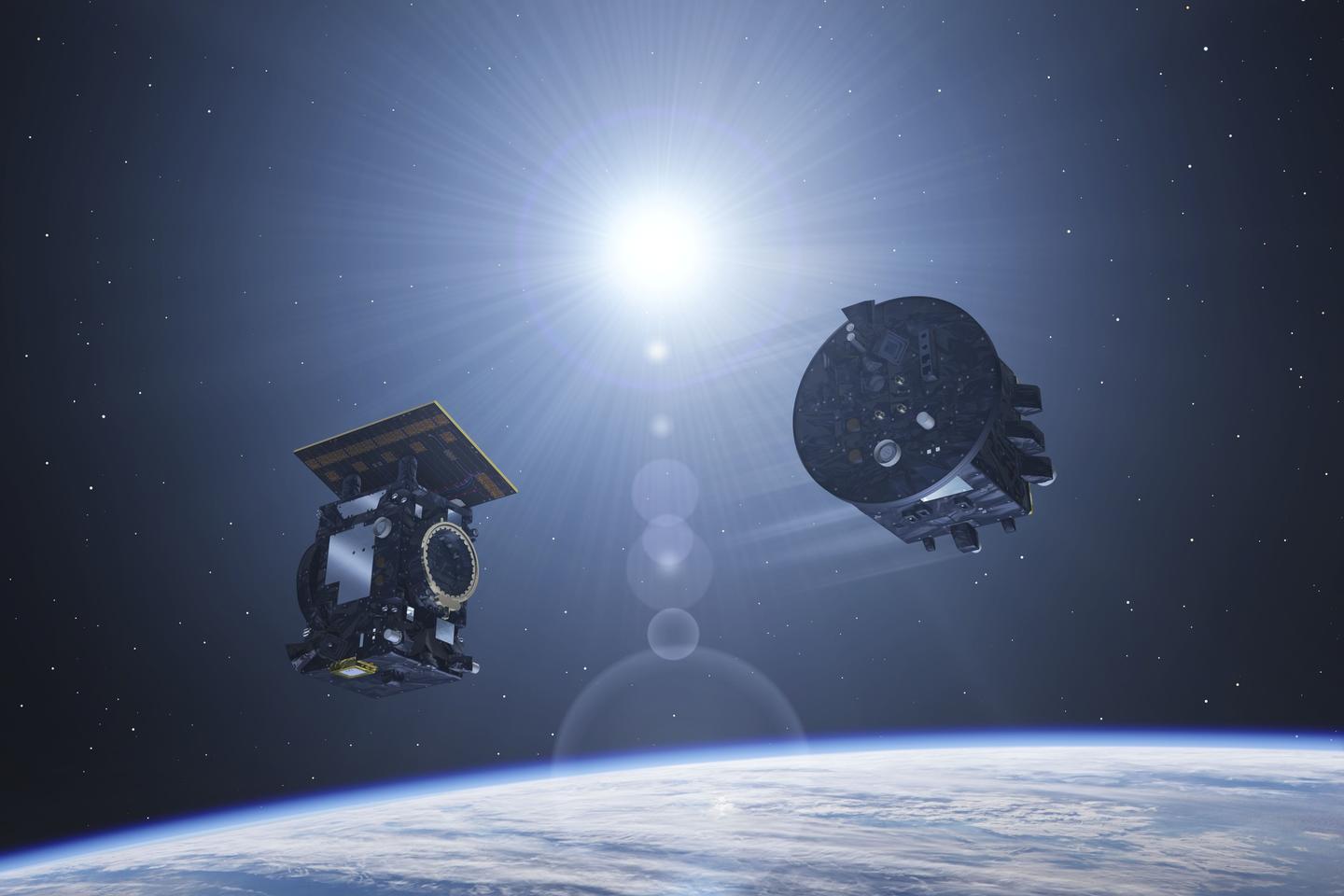


On Wednesday, December 4, two satellites will leave earth on an exceptional mission. Known as Proba-3, the European Space Agency (ESA) is at the helm of the project and defines it as a "demonstration mission," a term explained by the ESA project manager Damien Galano: "We want the demonstration mission to show what a specific technology is capable of achieving in orbit and under space conditions. We want to prove that it works." The name Proba is not the diminutive of probability, used by mathematicians, but rather from a Latin word proba, meaning let's test.
The satellite duo Proba-3 will attempt to show that two spacecraft can fly in formation with diabolical precision – like the Patrouille de France – to the power of 10. The first satellite is a telescope pointed at the sun. The second is a round occulter with a screen of 1.4 meters in diameter that must be positioned exactly in front of the sun's disk to mask it, just as the moon blocks out light during a total eclipse in order to view the corona, or the solar atmosphere that appears almost magically once the sun's blinding light has been masked.
ESA would like Proba-3 to be the first to successfully "demonstrate that two satellites can be precisely controlled, both in terms of their relative position and orientation," said Galano. "The speed of one satellite relative to the other will be close to zero, even though both will be traveling at several kilometers per second. Let's add a few figures to get a better idea of the scale of what we're trying to achieve. The occulter satellite will be positioned 150 meters from its colleague, casting a cone of shadow towards it. This shadow will then measure just 8 centimeters cm in diameter when it hits the coronagraph, whose entrance lens has a diameter of 5 cm, and we want that lens to remain in the center of the shadow," Galano said. "If it's at the edge, light will pass through due to diffraction."
Cameras and laser beams
Proba-3's essential mission is to obtain the equivalent of a rigid telescope measuring one-and-a-half hectometers in length, with two devices floating in the vacuum of space. To achieve this virtual "rigidity" that is, to ensure the satellites do not move in relation to each other, it is necessary for both components to know their respective positions precisely and at all times. For this purpose, several devices on board come into play: cameras that take images of the other satellite; a laser beam reflected by a retroreflector and light sensors installed all around the telescope entrance. Precision cold gas thrusters will move the occulter very slightly if its position needs to be corrected.
You have 42.53% of this article left to read. The rest is for subscribers only.
